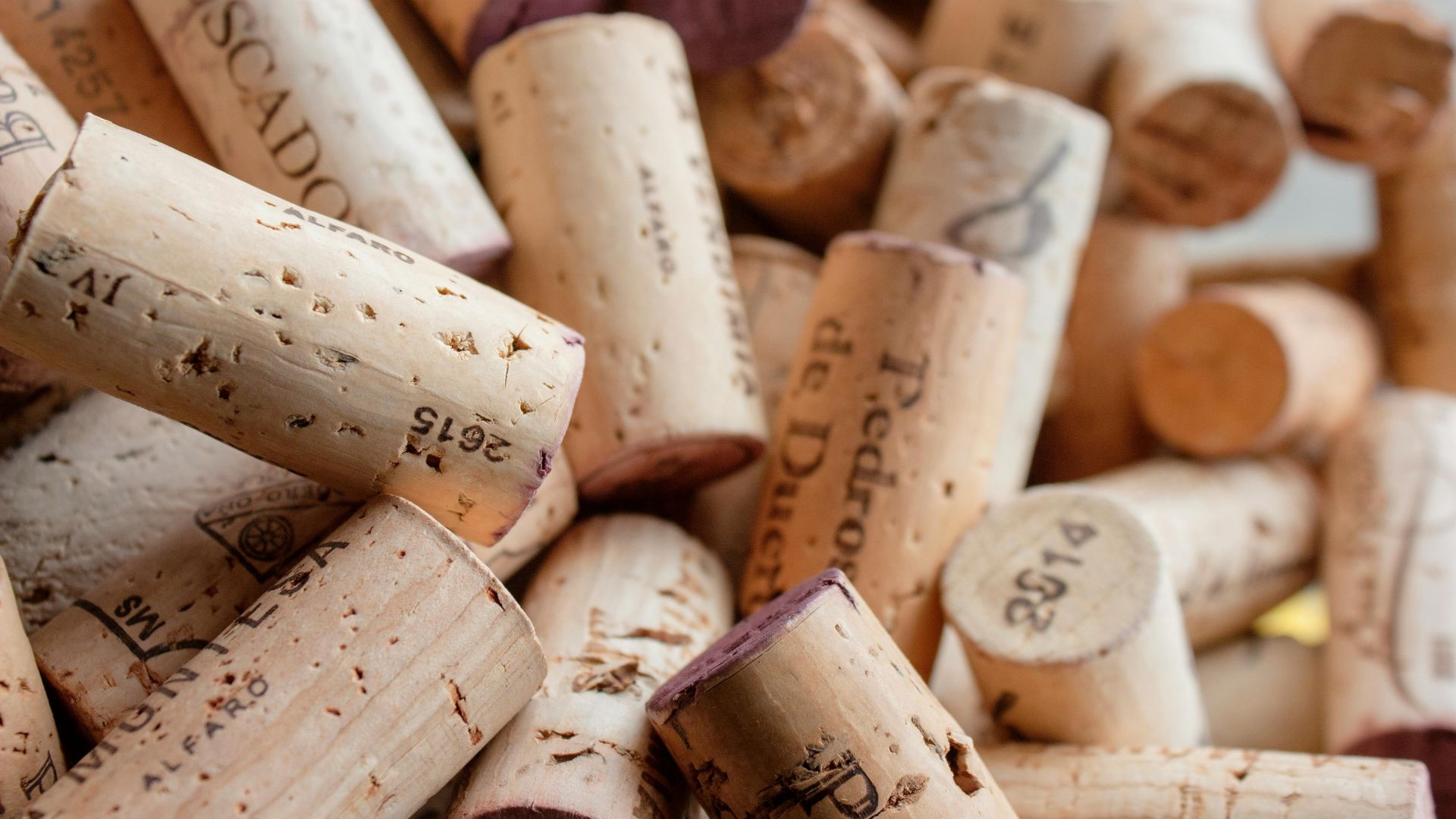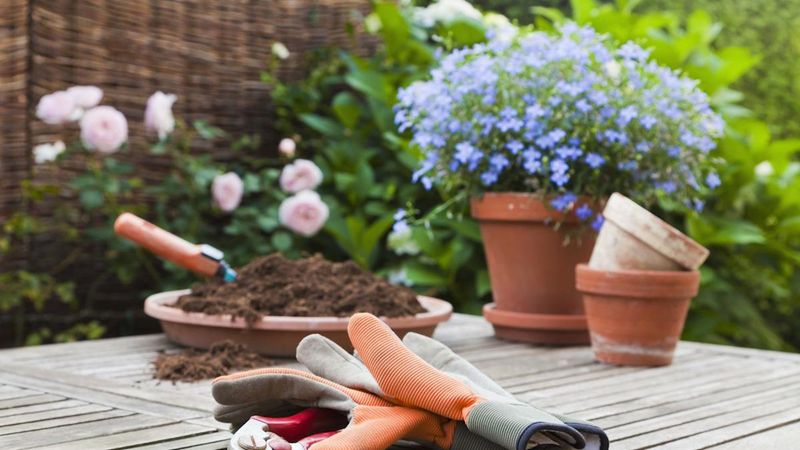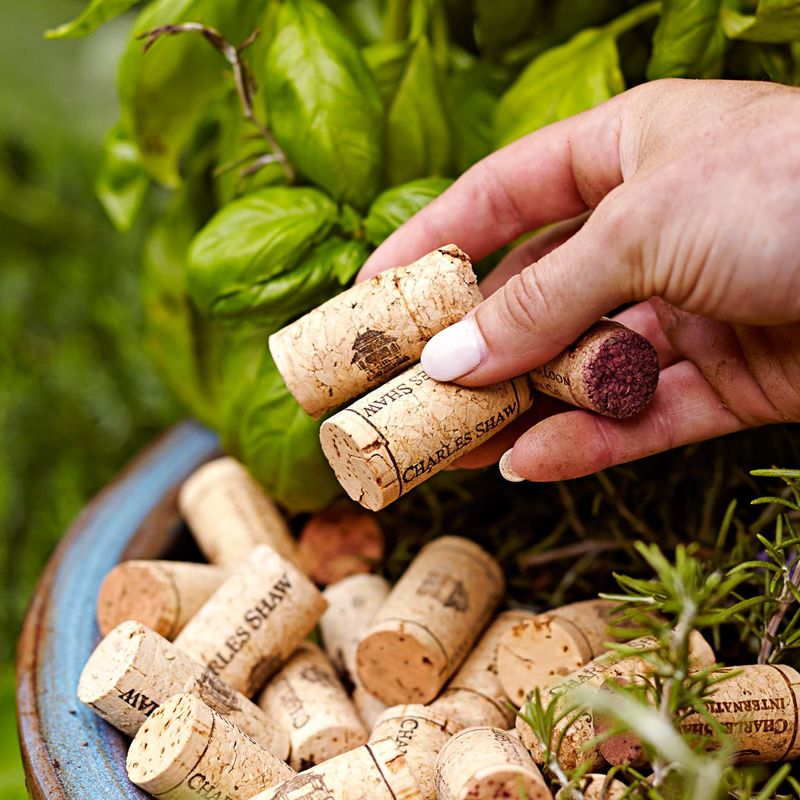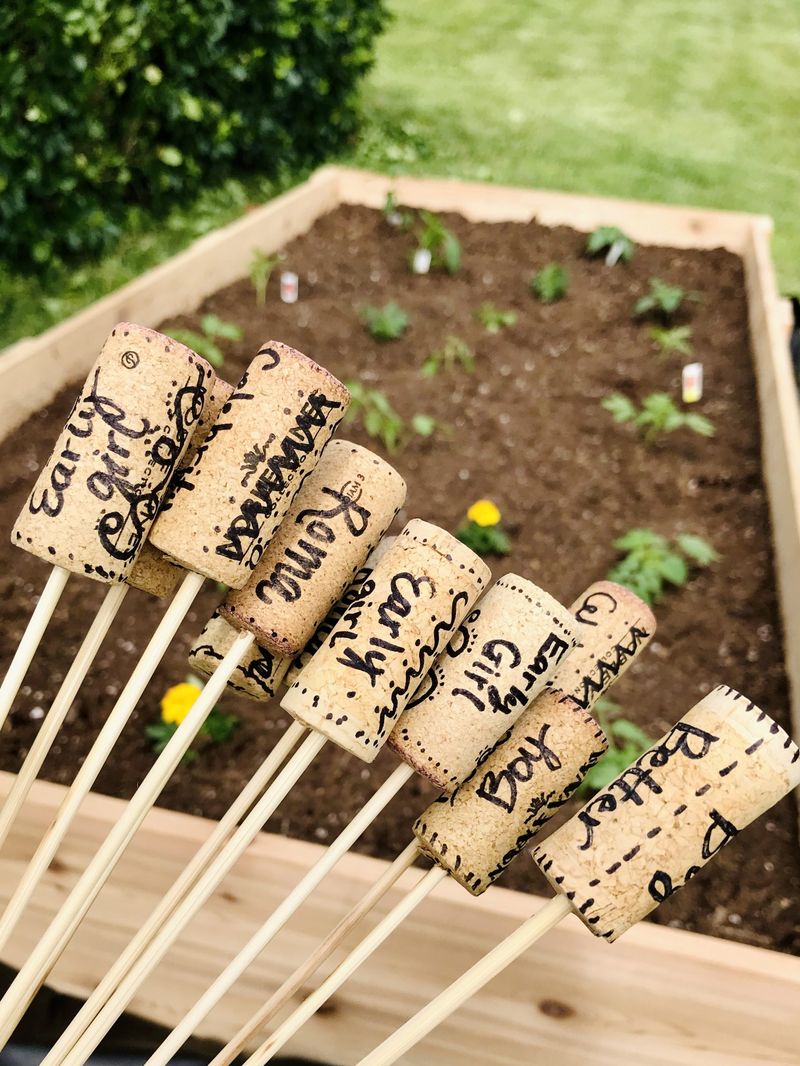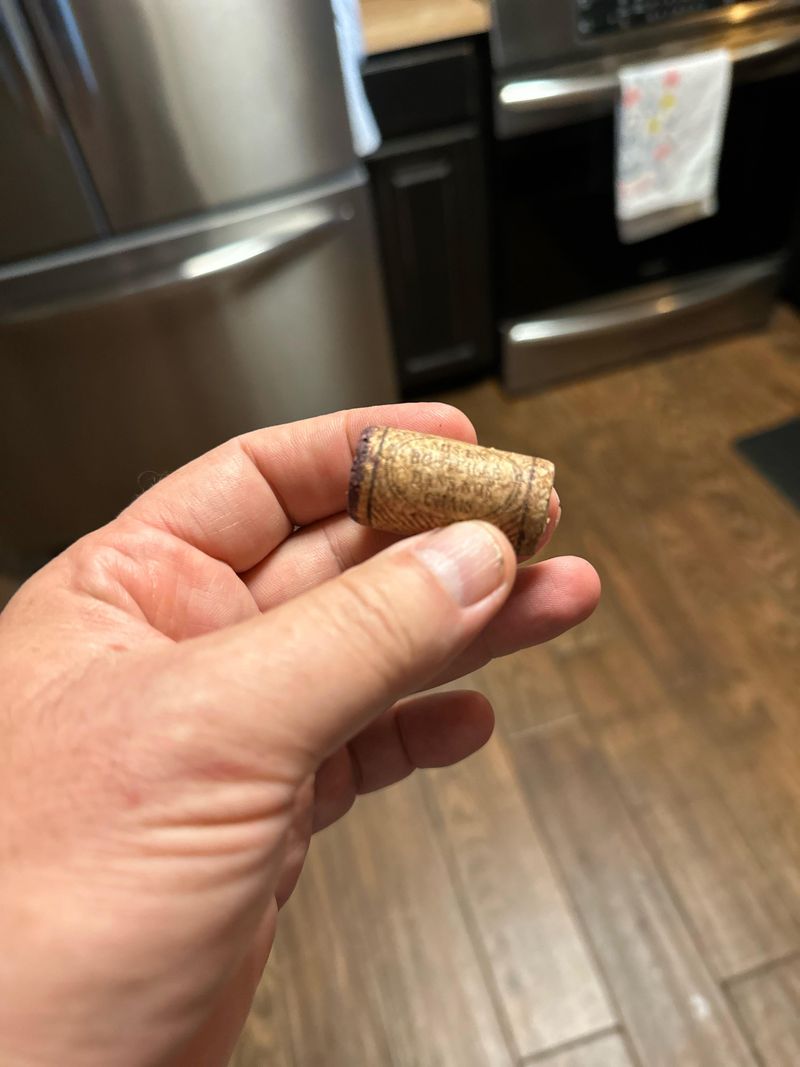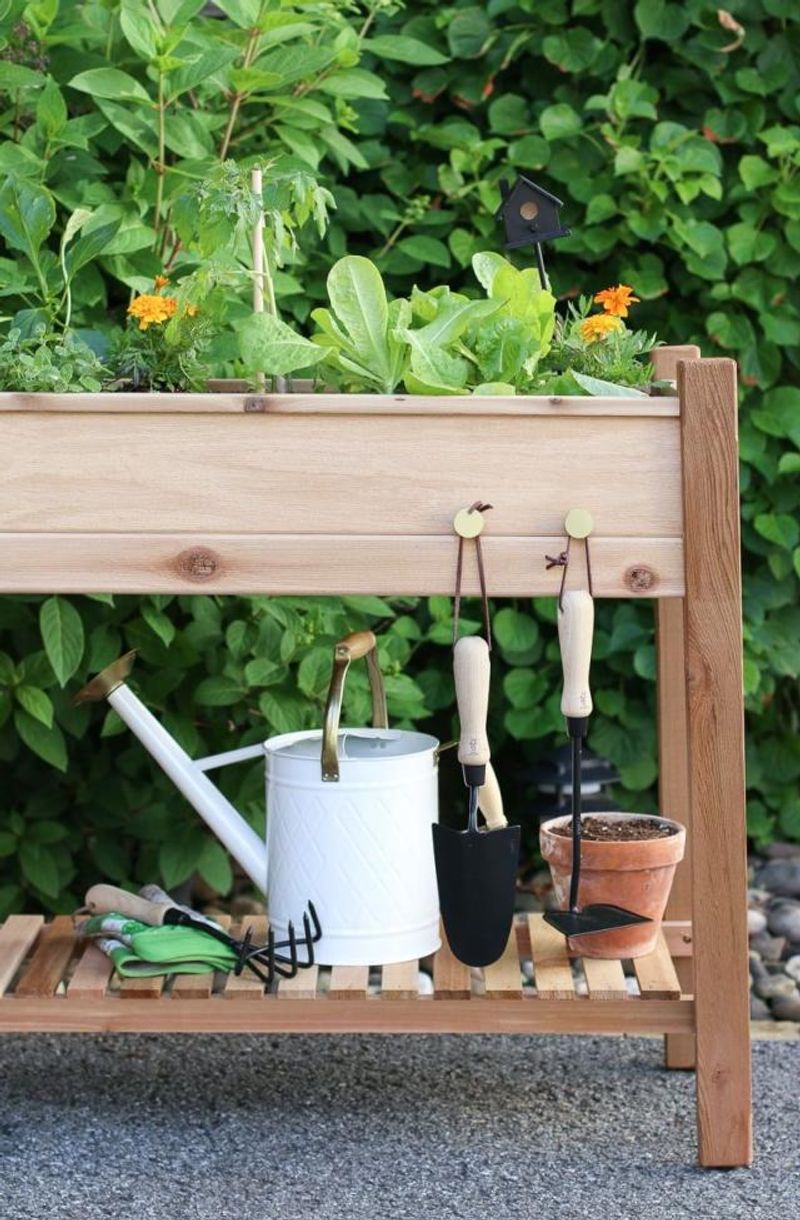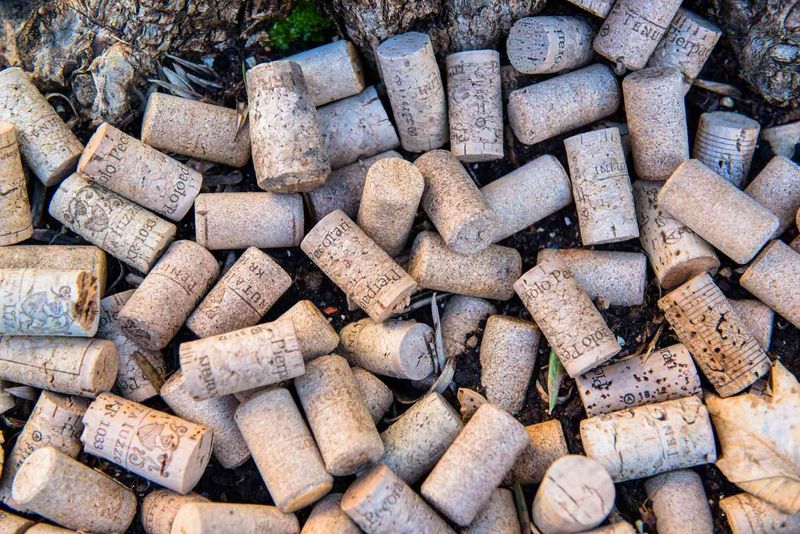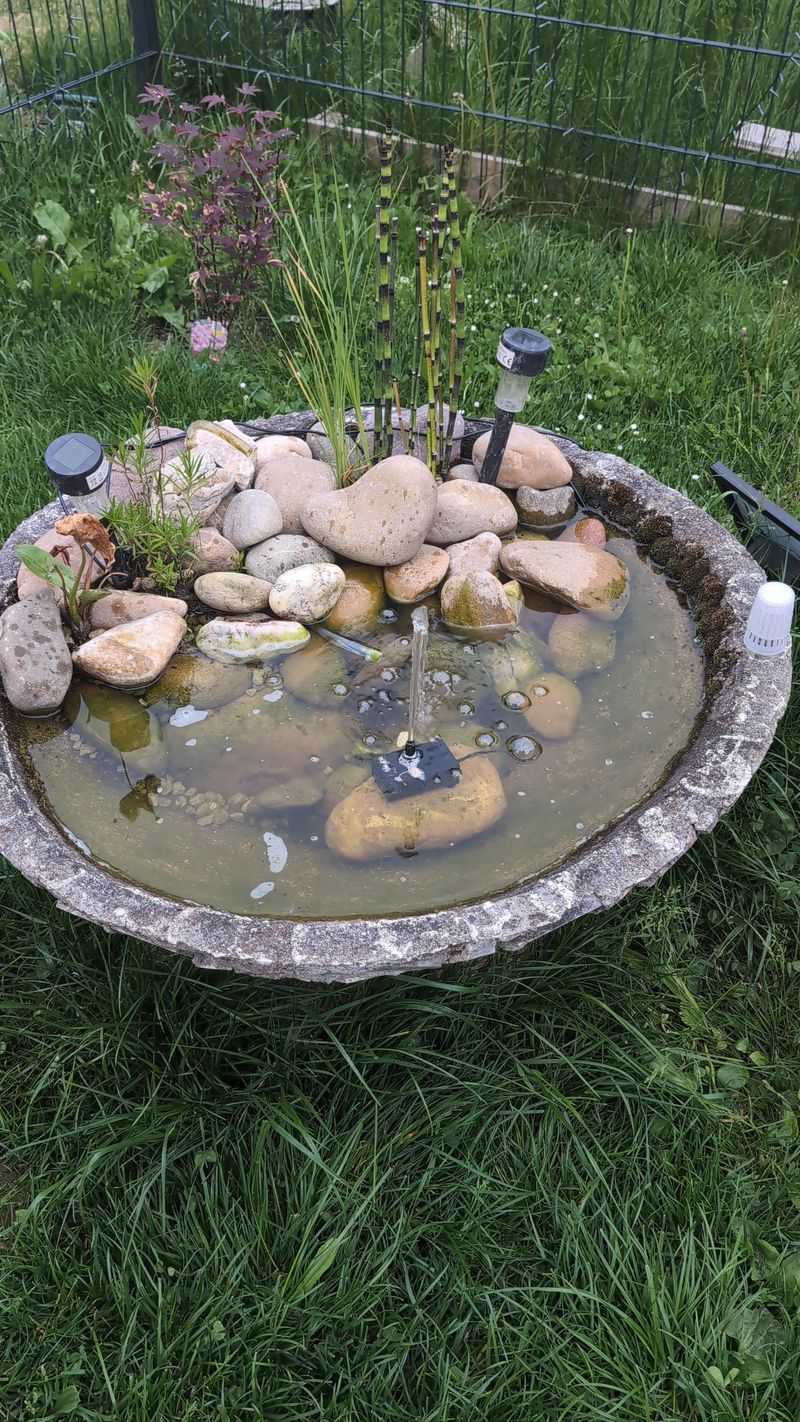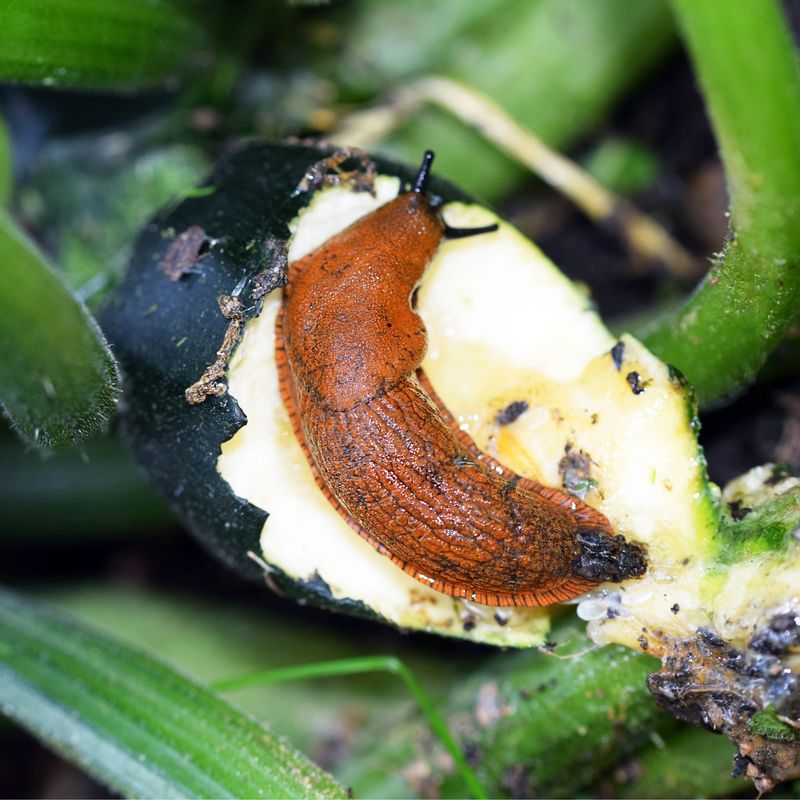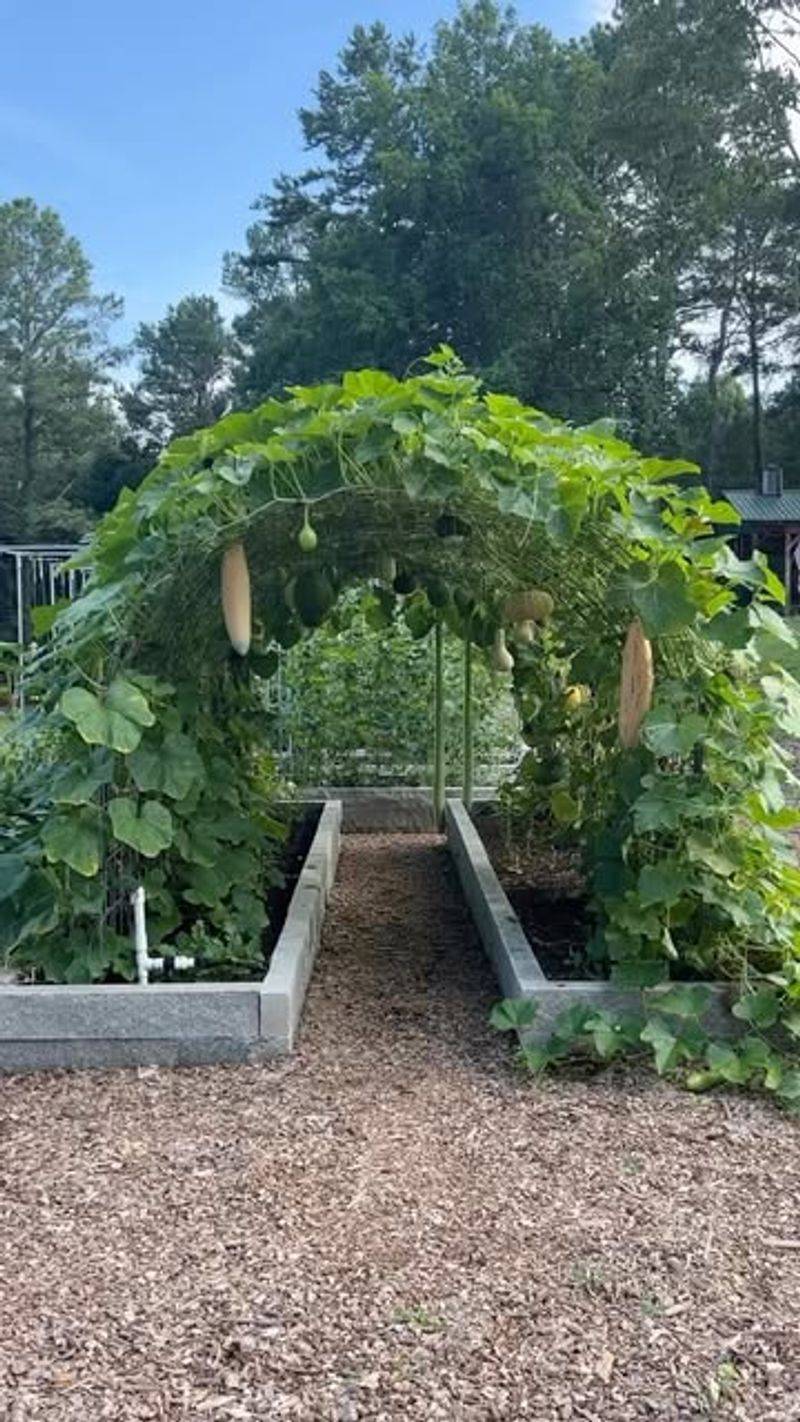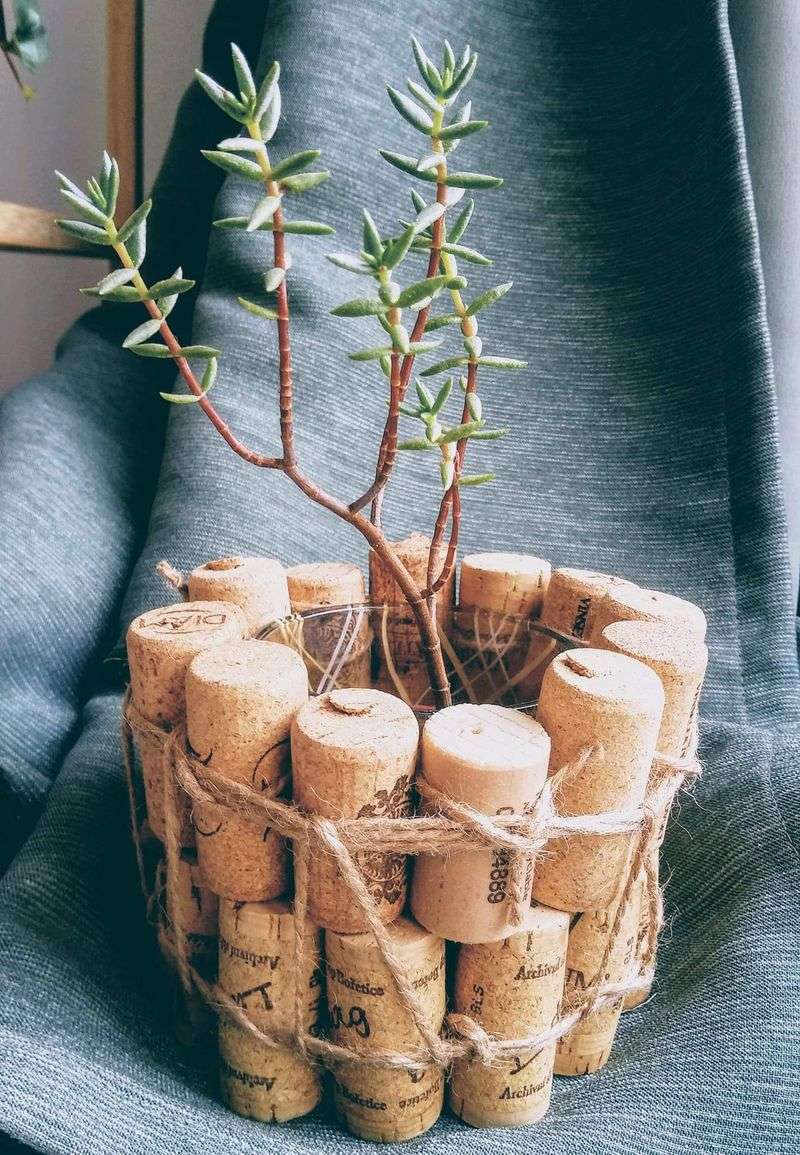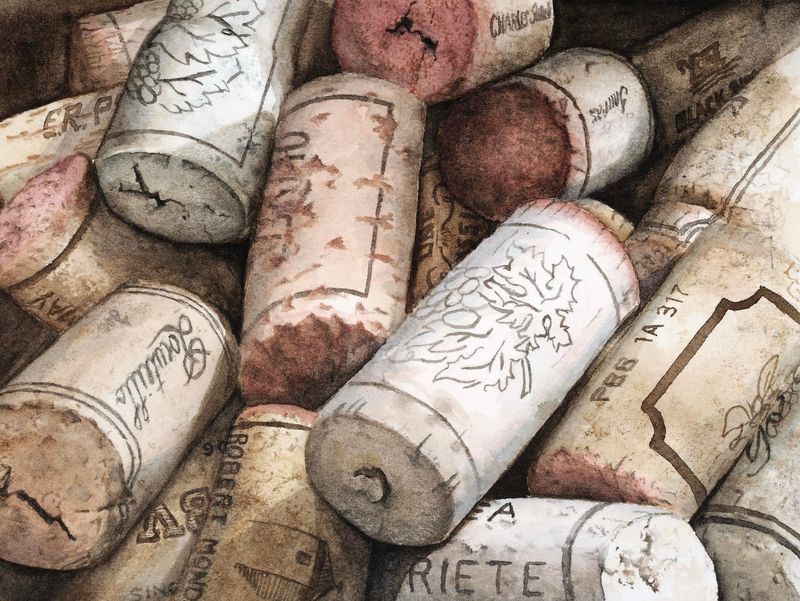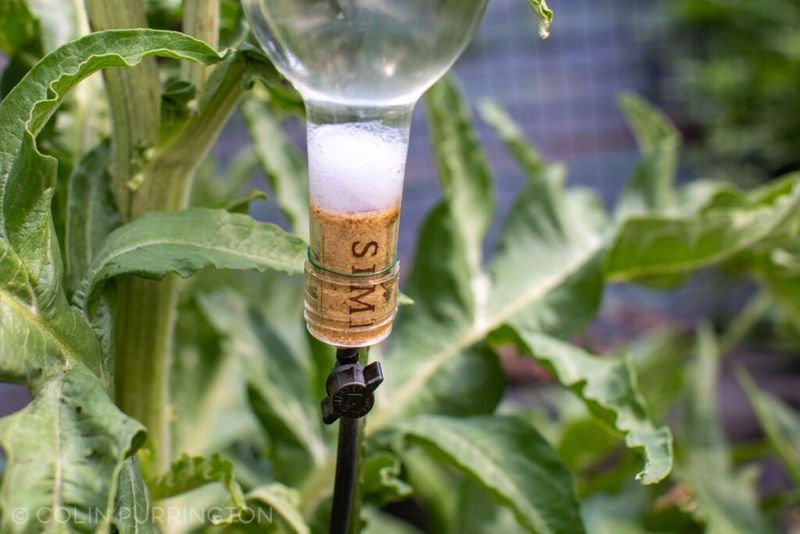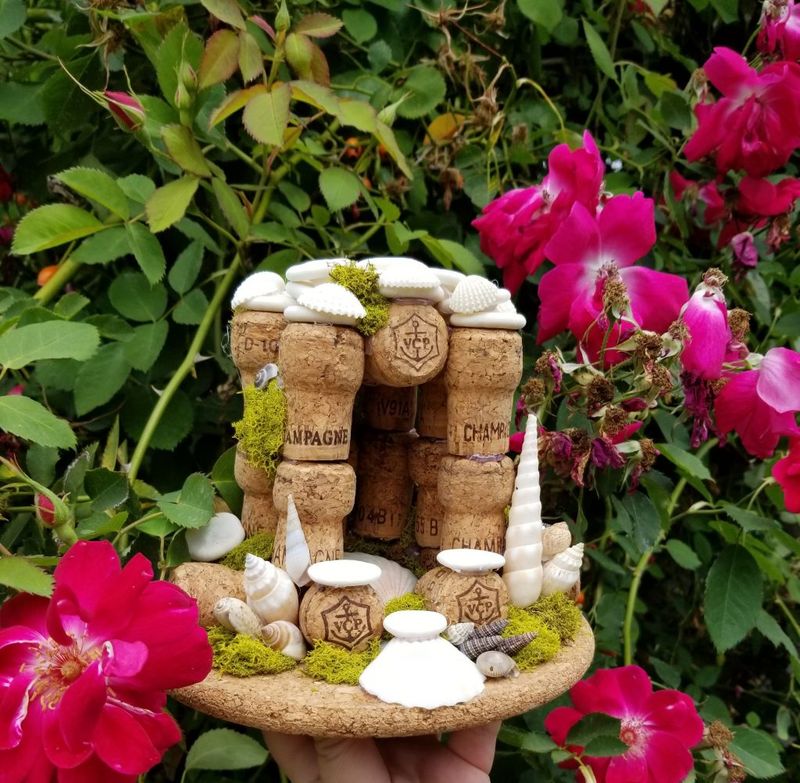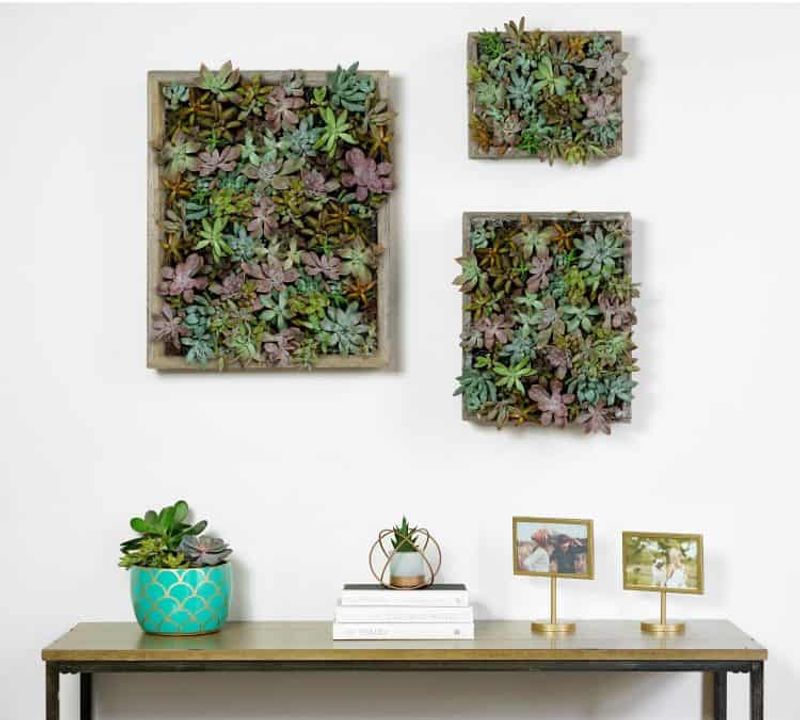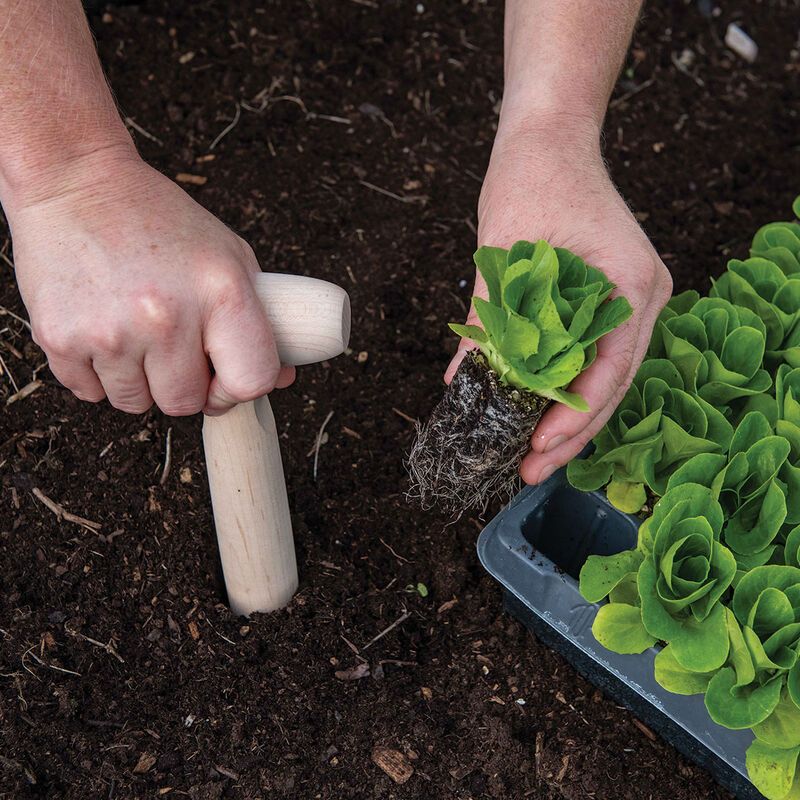If you love wine and also enjoy spending time in the garden, don’t be so quick to throw away those corks after finishing a bottle. I’ve found they can actually come in handy in some pretty unexpected ways.
Whether it’s using them to keep pests away or turning them into little plant markers, wine corks are a simple, eco-friendly way to give your garden a boost. Plus, it feels good knowing you’re reusing something instead of adding to the trash.
I’m always looking for easy, budget-friendly tricks like this, and using corks is definitely one of my favorites. Let’s dive into some clever ideas for putting those little stoppers to work in your garden!
1. Drainage Boosters For Potted Plants
Place a layer of wine corks at the bottom of plant pots before adding soil. They create perfect drainage spaces that prevent water from pooling and causing root rot.
Unlike rocks or broken pottery pieces, corks are lightweight and won’t make your pots too heavy to move around. I started using this trick last spring and noticed my container plants stayed much healthier throughout summer rainstorms.
You can use whole corks for larger pots or cut them in half lengthwise for smaller containers. Just make sure to arrange them with small gaps between each cork to allow water to flow through.
2. Mulch Alternative for Small Plants
Slice wine corks into thin discs and spread them around small plants as a natural mulch. The cork pieces help retain moisture while suppressing weeds just like traditional mulch options.
My neighbor couldn’t figure out what I’d used around my herb garden until I showed her my cork-cutting technique. The light color of the cork also reflects sunlight, helping to keep the soil cool during hot days.
For best results, cut each cork into 3-4 discs using a sharp knife on a stable surface. This mulch works especially well for container gardens where you want something decorative yet functional.
3. Plant Markers That Last
Cut corks in half lengthwise and write plant names on the flat side with a permanent marker. Push a wooden skewer into the rounded side and stick it in the soil next to your plants for easy identification.
Unlike paper or wooden markers that deteriorate quickly, cork stands up to watering and weather for an entire growing season. The natural water resistance of cork makes these markers particularly useful in vegetable gardens or herb patches.
To make them even more durable, apply a thin coat of clear nail polish over your writing. This simple trick has saved me countless times when trying to remember which tomato variety is which!
4. Floating Row Cover Weights
Thread garden twine through several corks and use them to hold down row covers or garden fabric. Their weight is just right – heavy enough to secure lightweight materials without damaging delicate plants underneath.
During unexpected frost warnings last spring, I quickly made some cork weights to secure protective covers over my seedlings. The corks are gentle enough that they won’t tear fabric even in strong winds.
Keep a few pre-made cork weight strings in your garden shed for emergencies. They’re much easier to use than hunting for rocks or bricks when you need to protect plants quickly from weather changes.
5. Compost Aerators (The Viral Trick!)
Push about 20-30 whole wine corks randomly throughout your compost pile to create air channels. This simple hack has gone viral because it solves the common problem of oxygen circulation in compost without any special equipment.
The natural spaces between corks create perfect pathways for air to reach the center of your pile, speeding up decomposition dramatically. After trying this method, my compost started breaking down in half the time it used to take.
No need to turn your pile as frequently when you use this method. The corks won’t decompose quickly, so you can retrieve them when you harvest your finished compost and reuse them in your next batch.
6. Mini Pot Feet Elevators
Cut corks in half and glue three pieces to the bottom of small plant pots to elevate them off surfaces. This prevents water stains on decks and patios while improving airflow beneath containers.
The slight elevation helps drainage and reduces the risk of pests like slugs climbing into your pots. When my patio containers started showing signs of rot last summer, switching to cork feet solved the problem immediately.
For heavier pots, use whole corks instead of halves and secure them with waterproof adhesive. This simple addition extends the life of both your plants and your containers by preventing moisture buildup.
7. Bird Feeder Float
Thread corks onto a string to create a floating perch in bird baths or water features. Birds appreciate having a safe place to land before drinking or bathing, especially smaller species that might avoid deeper water.
The natural buoyancy of cork makes it perfect for this purpose. I added a cork float to my backyard bird bath last month and noticed immediate increases in visitor numbers, especially chickadees and finches.
Arrange the corks in a circular pattern for stability, and anchor the string to the side of your bird bath. Replace the corks annually as they may eventually become waterlogged or develop algae growth.
8. Slug And Snail Barriers
Create protective rings around vulnerable plants by grinding wine corks into small pieces. The rough, dry texture irritates slugs’ and snails’ soft bodies, creating a natural barrier they won’t cross to reach your precious plants.
After years of losing seedlings to slimy invaders, this cork barrier method has saved countless lettuce and hostas in my garden. The cork pieces need replacing after heavy rain, but they’re much safer than chemical deterrents, especially around edible plants.
A food processor makes quick work of grinding corks, but you can also use a cheese grater for smaller batches. Sprinkle the cork pieces in a 2-inch wide band around plants for maximum protection.
9. Trellis Grid Connectors
Drill holes through corks to use them as connectors for bamboo stakes or thin branches when building DIY garden trellises. The cork acts as a natural junction that’s easy to work with and won’t damage plant stems that brush against it.
Last summer I built a cucumber trellis using this method, and it stood strong all season despite heavy fruit loads. The flexibility of the cork connections actually helps the structure withstand wind better than rigid connections would.
For extra stability, soak the corks in water before drilling to make them softer and less likely to split. These natural connectors will last for several growing seasons before needing replacement.
10. Seed Starting Pods
Hollow out wine corks with a small drill bit or apple corer to create tiny planters for seed starting. Fill the hollowed corks with seed starting mix, add one seed per cork, and place them in a shallow tray of water.
The natural wicking action of cork keeps seeds perfectly moist without overwatering. When seedlings develop their first true leaves, you can plant the entire cork directly into the garden where it will eventually break down.
This method works particularly well for small seeds like herbs and lettuces. My kitchen windowsill now features a rotating collection of these mini cork planters that deliver fresh microgreens year-round.
11. Garden Tool Handles
Upgrade old garden tools by attaching wine corks to create more comfortable grips. Simply drill a hole through the cork and slide it onto the handle of small tools like trowels or pruners where metal handles can get uncomfortable during extended use.
The natural texture and slight give of cork provides excellent grip even when your hands are wet or muddy. After developing hand cramps from my metal trowel, adding cork grips allowed me to work in the garden twice as long without discomfort.
For larger tools, use multiple corks side by side and secure them with waterproof adhesive. Give the finished handles a light sanding for a smooth, splinter-free surface that’s gentle on your hands.
12. Micro-Irrigation Flow Regulators
Drill a tiny hole lengthwise through wine corks and connect them to irrigation tubing to create adjustable drip emitters for container plants. The narrow passage through the cork naturally slows water flow to a perfect drip rate.
By varying the size of the hole, you can customize water flow for different plants’ needs. This hack saved my container garden during a two-week vacation when I couldn’t water manually.
Connect the cork emitters to a simple gravity-fed system using a raised bucket or rain barrel. The corks won’t clog like commercial emitters often do, and they’re easy to clean by simply running a thin wire through the center.
13. Mini Fairy Garden Furniture
Transform wine corks into charming miniature furniture for fairy gardens. Slice corks into rounds for tables, cut them lengthwise for benches, or stack and glue pieces to create tiny chairs and stools that resist weather damage.
My grandkids spend hours arranging and rearranging the cork furniture in our backyard fairy garden. The natural look of cork blends perfectly with garden settings while standing up to outdoor conditions far better than plastic alternatives.
A little acrylic paint can add fun colors to your cork creations, though the natural cork color often looks most authentic. Seal finished pieces with clear outdoor sealant if you want them to last for multiple seasons.
14. Vertical Garden Backing Board
Glue wine corks flat side down onto a wooden board to create a natural backing for mounting air plants, succulents, or moss. The textured surface provides perfect nooks for tucking in small plants while the cork’s resistance to moisture prevents rot.
After seeing a similar display at a garden show charging hundreds of dollars, I made my own for less than $20 using saved corks. The varying heights and natural patterns of the corks create an interesting visual texture even before adding plants.
Mount your cork board in a partially shaded area for best results with most plants. Mist occasionally to provide moisture without saturating the cork, which helps preserve its natural properties longer.
15. Soil Block Dibber Tool
Attach a wine cork to the end of a dowel or pencil to create a perfect dibber tool for making seed planting holes in soil blocks or seed trays. The cork creates ideal-sized depressions without compacting surrounding soil too much.
For years I struggled getting seeds planted at consistent depths until I made this simple tool. The cork’s end can be shaped or sanded to create different sized holes for various seed types.
Mark measurement lines on the cork with permanent marker to help you gauge planting depth for different seeds. This humble tool has dramatically improved germination rates in my vegetable garden by ensuring seeds are planted at their optimal depth every time.

